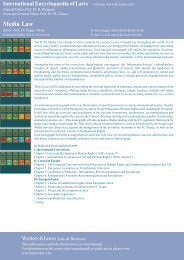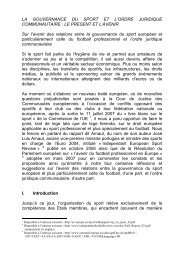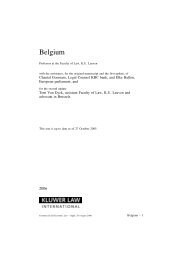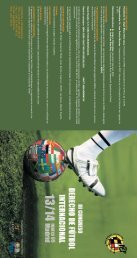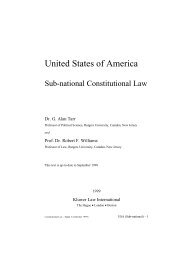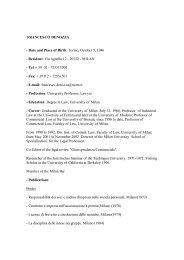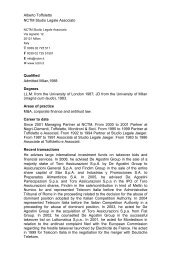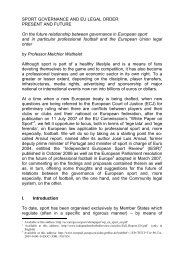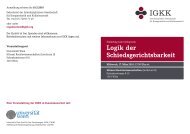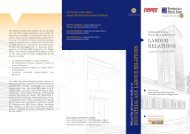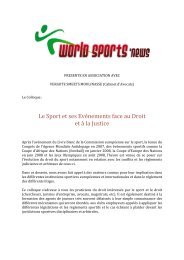Denmark - International Encyclopaedia of Laws
Denmark - International Encyclopaedia of Laws
Denmark - International Encyclopaedia of Laws
Create successful ePaper yourself
Turn your PDF publications into a flip-book with our unique Google optimized e-Paper software.
Part II, Ch. 1, Restrictive Agreements 344–347allocation <strong>of</strong> production or sale quotas; the limitation <strong>of</strong> imports or exports andthe sharing <strong>of</strong> markets, including bid rigging. 11. LFF 2007-07-02 nr. 152, FT 2006-07, Tillæg A, 4986.344. In its Leniency Guidelines, the Danish Competition Authority refers to thesame restrictive practices as examples <strong>of</strong> cartel activities, but adds ‘secrecy’ as ahallmark cartel characteristic. In the Authority’s view, a cartel is ‘an illegal agreementbetween competitors that restricts competition’, and ‘cartel activities are characterizedby the fact that they are difficult to expose because the cartel participantshave a common interest in keeping their agreement secret’. 11. Danish Competition Authority’s Guidelines on leniency for cartel activities, available at: (last visited 30 Jun. 2009).345. The Competition Appeals Tribunal provided its own interpretation <strong>of</strong> a‘cartel’ in Møns Bank e.a. v. The Danish Competition Council, a decision <strong>of</strong> 26March 2008. 1 In that case the Danish Competition Council had found that the cooperationbetween seven local banks established in Zealand and Funen violated competitionlaw. First, participation in the group had been made conditional uponadherence to a geographical market-sharing agreement: no participating bank wasto open a branch in the same town as another bank’s headquarters. Second, they hadagreed to avoid actively soliciting each other’s customers, and third, the banks hadexchanged commercially sensitive information on prices and charges. The Councilconsidered these violations to be hardcore violations and publicly denounced thecooperation as a ‘bank cartel’.1. Upholding Lokalbanksamarbejdet, Danish Competition Council decision <strong>of</strong> 2 Oct. 2007.346. The seven banks appealed to the Competition Appeals Tribunal. The Tribunalupheld the qualification <strong>of</strong> the banks’ behaviour as an infringement <strong>of</strong> competitionlaw but did not agree with the Council’s classification <strong>of</strong> the bankcooperation as a ‘cartel’. According to the Tribunal, the banks’ limited marketshares meant that their market and customer allocation arrangements could not havehad the appreciable effect on competition needed to qualify the infringement as acartel. With regard to the information exchange, the Tribunal noted that the DanishCompetition Council had failed to establish that all <strong>of</strong> the information exchangedhad been confidential, that the exchanges had taken place systematically, that thebanks had followed the same pricing policy, or that the exchanges had taken placewith that purpose.347. From an EU perspective, it is perhaps peculiar that a market or customerallocation agreement is not considered a per se cartel agreement. However, it shouldbe noted that the Danish de minimis rules, contrary to EU de minimis rules, currentlyprovide a safe haven for market or customer allocation arrangements. 1 Moreover,the Competition Appeals Tribunal handed down its judgment before the entryinto force <strong>of</strong> the leniency provisions contained in section 23 <strong>of</strong> the Competition Act.Competition Law – (February 2011)<strong>Denmark</strong> – 79



